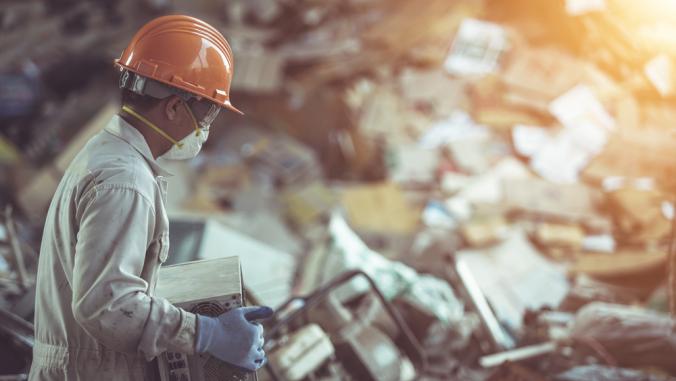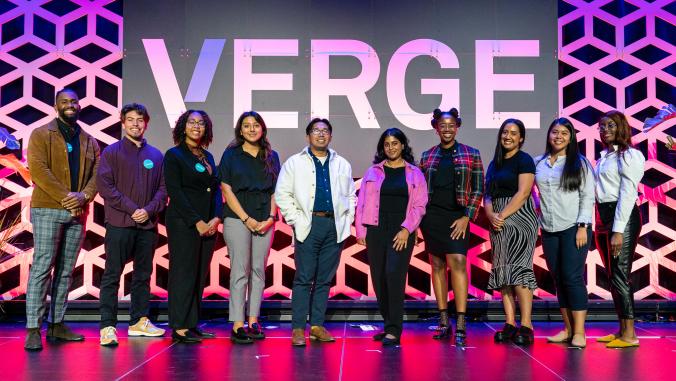As EV adoption grows, charging infrastructure needs to do the same
Electric vehicle manufacturers, governments and every entity in between have roles to play.

When Lyft announced in November that it would deploy 200 electric vehicles for its rental program in Denver by the end of this year, it also reminded the public that it plans to make its entire fleet 100 percent electric over time.
Other rideshare companies have made similar announcements about EV fleet deployments — and in some cases incentivized drivers to make the switch by providing subsidies.
This push is "being driven by overall fleet economics and regulatory pressures because rideshares are putting more cars on the road," said Ivo Steklac, COO/CTO at EVgo, a network of public fast charging stations, during last week’s GreenBiz webcast on how electrifying transportation will affect the future of the grid — from individual vehicles to fleets of delivery trucks to rideshare vehicles.
Electrification started with passenger cars and is moving on to buses, water taxis and trains. As companies continue to iterate on these, teams are dedicated to figuring out how to electrify heavy trucks and potentially even planes.
Cities and companies across sectors — the city of Sacramento, Amazon and FedEx among them — also have made plans to transition to electric car and truck fleets. However, "if all forms of transportation [cars, ships, trains, buses, trucks and planes] were to be electrified, we would need 75 percent more electricity by 2050," Guido Jouret, chief digital officer at ABB, said during the webcast.
As more electric vehicles hit the pavement, infrastructure to support them has to keep up because they will all need a place to charge.
That means that the way we charge them needs to be rethought, too, in order to ensure equal access to clean energy. As more electric vehicles hit the pavement, infrastructure to support them has to keep up because they will all need a place to charge.
Charging up, changing up
In this transitional phase, for individuals who drive EVs and have charging systems at home, operating their vehicles is similar to operating their mobile phones. "You get home, you plug in, you drive off the next morning," Jouret said during the webcast.
But that’s not the case for many. Most people, including many rideshare drivers, do not have chargers at home — because they live in apartment buildings without them or they don’t have the ability to get one installed. Steklac said EVgo has seen a rise in rideshare drivers using its networks to charge their vehicles, as most of these drivers don’t have access to charging at home.
As more people and companies use electric vehicles, local, county and state governments play a role in helping improve adoption rates. Steklac said that governments need to have a forward view on electrification, which includes knowing the real cost of electrification, which influences the local utility company rates.
For example, governments also should be thinking about programs and subsidies to support EV infrastructure. EVgo itself has been awarded funding for public infrastructure while building a charging depot for a fleet. Steklac said this was made possible because the company demonstrated that having dedicated charging for fleets would free up stations for people who relied on public charging.
The future of electric vehicles
Jouret also noted the barriers in the transition to EVs — the cost of the battery, range of EV options and the availability of chargers.
The transition to electrified transportation is already a foregone conclusion.
"The good news is battery innovation is flourishing," he said, noting that in addition to improving lithium-ion batteries, companies are exploring other battery chemistries. With these improvements, electric vehicles could hog a lot less energy.
As Katie Fehrenbacher, GreenBiz senior writer and transport analyst, discussed in her Transport Weekly newsletter, at least a couple startups are attempting to improve EV batteries. One is Eatron, which makes an AI-based battery management system, and then there’s ReJoule Energy, developing a chip that can detect battery health in real-time in addition to providing analytics and predictions.
There are still hurdles to jump over to achieve total transportation electrification, but because transportation is the sector that emits the most greenhouse gas emissions, the transition to electric vehicles is needed and likely to continue on.
"The transition to electrified transportation is already a foregone conclusion, whether it is as a personal vehicle," said Steklac, noting that EVs have lower costs of maintenance, are faster accelerating, are more fun to drive than the equivalent internal combustion vehicle and that when looking at larger fleets, they "just simply make economic sense."
"The added benefit of this is that they are zero-emission vehicles, and as we are converting to more and more renewable sources of energy on our utility grids, that becomes a virtual cycle that ends up benefitting all of us."





